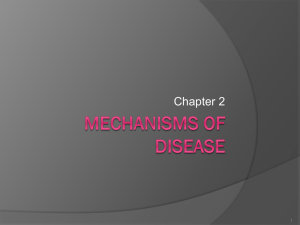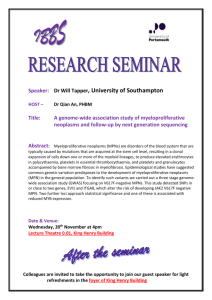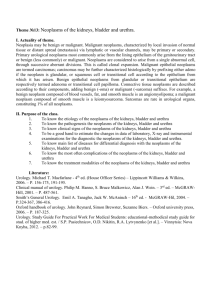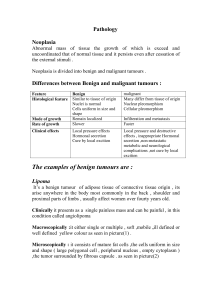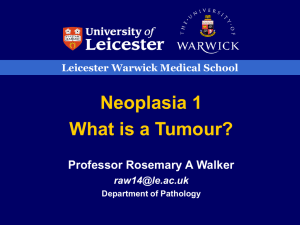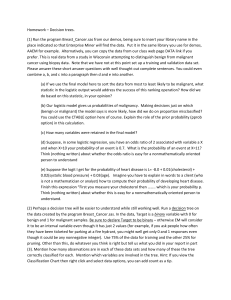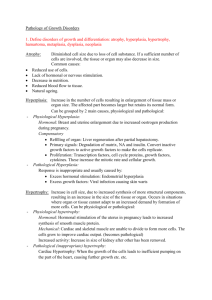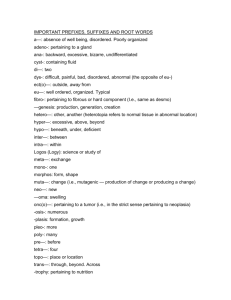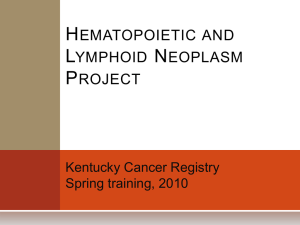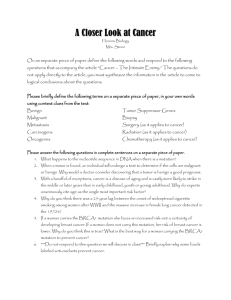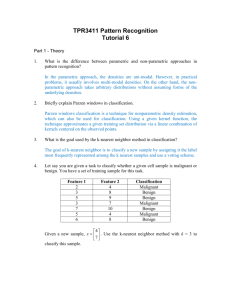Chapter 5 Hyperplasias and neoplasms
advertisement
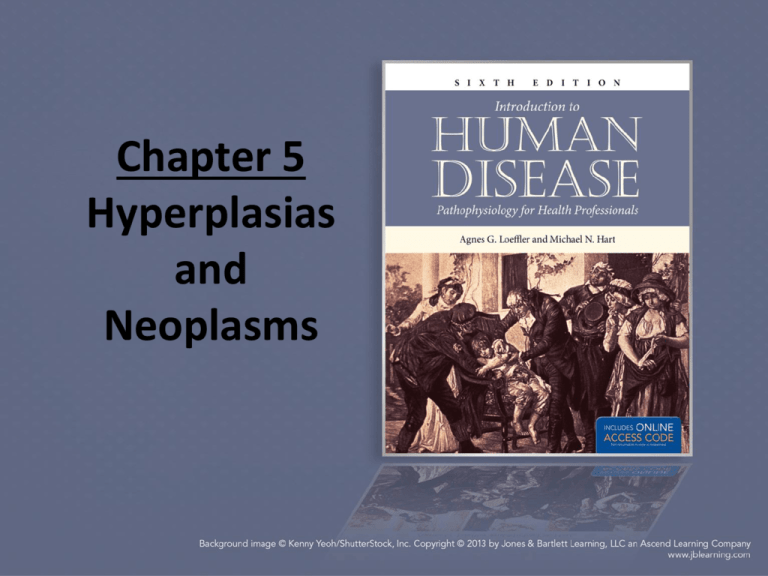
Chapter 5 Hyperplasias and Neoplasms Review of Structure and Function • All cells develop from the fertilized ovum Review of Structure and Function • Cell division continues into specialized cells including: – Labile Cells – Stable Cells – Epithelial Cells – Connective Tissue Cells – Muscle Cells – Nervous tissue Cells Hyperplasia and Hypertrophy • Hyperplasia and hypertrophy are exaggerated responses to a growth stimulus • This can be a normal response to the body’s demands. Metaplasia and Neoplasia • Metaplasia is the replacement of one tissue type with another. – This can be a normal response, or a pathologic change. • Neoplasia is similar to hyperplasia in that they are both increased cell proliferation – The difference is neoplasia is cell proliferation in the absence of a stimulus. Hyperplasia and Neoplasia • The masses produced by these processes cannot be distinguished from one another without a histological examination. • Treatment for each is vastly different. Remember, neoplasias are autonomous growth, while hyperplasias will stop growing once the stimulus is removed. Classification of Neoplasms • Typically put into one of three categories – Benign – Malignant – Uncertain malignant potential Benign Neoplasms • Benign neoplasms generally are localized, and remain in the tissue in which they originated • These are a single mass discrete from the surrounding tissue. Benign Neoplasms • They usually have a fibrous rim or capsule around them, which makes them easier to excise. • The cells closely resemble the cells of origin Malignant Neoplasms • Malignant neoplasms are more likely to spread to entirely different sites, or invade nearby structures. • Metastasis often occurs through the lymph nodes.

